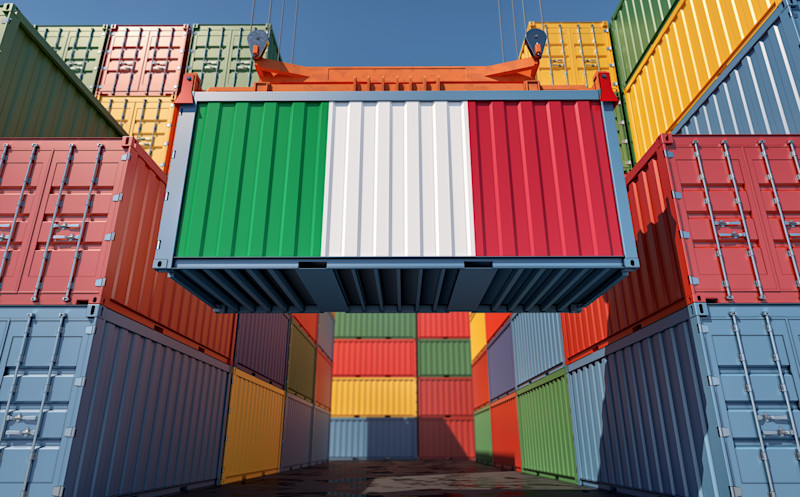According to IHS Markit, the Italian automotive industry will recover much faster than other sectors of Italy’s economy, which can be demonstrated by the fact that Italy will reach pre-COVID-19 growth in manufacturing as early as 2022. Ian Fletcher from IHS states, "Although we expect the light-vehicle market to grow by around 5.5% year over year during 2021, volumes will be 1.9 million units, a level previously reached in 2015-2016 as the market recovered from the European financial crisis, while it will not break through the 2-million-unit barrier until 2022.” In the automotive manufacturing sector, a full recovery of the industry will happen around 2022 as well. Because the automotive industry is globalized in Italy, they are not as impacted by the economic downturn as other businesses are in the country.
In 2017, Italy introduced the Industry 4.0 National Plan, a government program to help companies capitalize on the fourth industrial revolution. This program allowed for companies to choose from a wide variety of incentives to transition to more digitized factories and meet the industry’s challenges. As a result, Italy has been at the forefront of high-tech manufacturing in Europe and the world. According to Deloitte's global survey, Italy was the leader in capitalizing on the fourth industrial revolution. In fact, Italy is the eighth largest exporter in the world, according to the Observatory of Economic Complexity. It is also the eighth most significant exporter of automotive parts in the world, and in 2019, it exported $14.7 billion worth of parts. Since the implementation of the Industry 4.0 National Plan, exports have increased considerably. Its adaptation has allowed Italy to position itself as one of the largest exporters for automotive parts in the future.
The Italian machine tool, robots, automation systems, and ancillary products manufacturers’ association, UCIMU-SISTEMI PER PRODURRE, commented on the success of Italy’s transition to digital manufacturing in a July 2021 press release, noting that there was a long way to go despite the positive outlook. Barbara Colombo, the association’s president, stated, “The upgrade and digitalisation process of plants that has already started about five years ago cannot certainly stop, as much is still to do. The results of the survey conducted by UCIMU-SISTEMI PER PRODURRE on ‘The total machine tools in operation in the Italian industry’ and presented in June are an evidence of this.”
The press release went on to examine some roadblocks smaller businesses faced: “The digital transformation and the technological upgrade mainly concerned large and mid-sized enterprises. The small-sized companies made investments in new technology, but only to a limit extent. Nevertheless, it is clear that it will take longer for the smaller enterprises to keep up with this transformation than for the bigger ones. There are at least two reasons for that: the first one is linked to available funds. Investments in new production technologies, especially in state-of-the-art equipment, are very onerous, and weigh on the budget of small enterprises, which must consequently spread their purchases over longer periods. The second, not less important reason is related to culture: it takes time to understand all the mechanisms connected with this transition and overcome the fear of thinking about reorganising the way of working.
‘These data and these observations – as stated Barbara Colombo, president of UCIMU-SISTEMI PER PRODURRE – prove the effectiveness of the provisions included in the plans of industrial policy. Moreover, they confirm that incentive measures, such as tax credit for the upgrade of plants and that for investments in technologies 4.0, should not only continue for the whole year 2022, but should also become structural’.”
On July 8, 2021, the International Energy Agency (IEA) issued the following update of the Impresa 4.0 National Plan: “The new National Transition Plan 4.0 (Impresa 4.0 National Plan Update) is the first brick on which the Italian Recovery Fund is founded. The investment consists of approximately 24 billion euros for a measure that becomes structural and sees the strengthening of all the deduction rates and an important advance in the times of use. It has two fundamental objectives: • Stimulate private investment; • Give companies stability and certainty with measures that take effect from November 2020 to June 2023. This package includes increased tax credits for investments in Research and Development for "green and digital" projects. The tax credit is increased from 10% to 15%, and the maximum from EUR 1.5 million to EUR 2 million.”
Additionally, in the AMT weekly “International News From the Field” column, Hubert Sawicki noted in the May 2021 Italy-focused piece: “Fiat Chrysler Automobiles, together with the French PSA division of Stellantis, is nearing the completion of its $5.5 billion spending program to launch electric and hybrid models to increase utilization at FCA’s Italian-based plants. It includes a new full-electric minicar, Jeep hybrid models, and electrified models for Maserati and Alfa Romeo.”
Supply Chain Operational Shifts
Understanding how the supply chains within Italy are changing through the adaptation of Industry 4.0 technologies has allowed for more streamlined and transparent transportation and storage of products, which has reduced the ease of doing business internationally. Technologies that have been adopted in many factories are "smart logistics," an integration of cloud-based GPS tracking frequency identification technologies (RFID), which allow for real-time tracking of packages and allow the analysis of the performance of delivery routes, which can lead to saving costs in the future.
Another example of how manufacturing factories are innovating in Italy is the ROLD manufacturing plant, which was recognized by the World Economic Forum for being a leader in adopting Industry 4.0 technologies that focused on the factories' sustainability and environmental impact. In 2019, the World Economic Forum recognized 16 different factories worldwide for adopting Industry 4.0 technologies; the ROLD plant of Cerro Maggiore was among those named. This is also an example of the success of the Industry 4.0 National Plan; through its incentives, the plan assisted ROLD in achieving compliancy and received recognition as a world leader.
The information provided in this article is based on research and report provided by George Washington University – CIBER Bootcamp and commissioned by IBDGi on behalf of AMT for the publication of the white paper Views on the Manufacturing Technology Supply Chain and International Trade: Changes in the Global Supply Chain, the International Manufacturing Industry, and the Demand of MT Equipment. To access the full white paper, click here.






